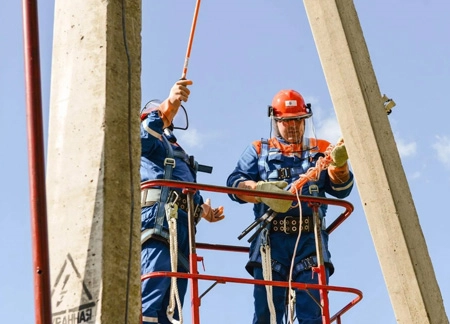
-
 Afrikaans
Afrikaans -
 Albanian
Albanian -
 Amharic
Amharic -
 Arabic
Arabic -
 Armenian
Armenian -
 Azerbaijani
Azerbaijani -
 Basque
Basque -
 Belarusian
Belarusian -
 Bengali
Bengali -
 Bosnian
Bosnian -
 Bulgarian
Bulgarian -
 Catalan
Catalan -
 Cebuano
Cebuano -
 Corsican
Corsican -
 Croatian
Croatian -
 Czech
Czech -
 Danish
Danish -
 Dutch
Dutch -
 English
English -
 Esperanto
Esperanto -
 Estonian
Estonian -
 Finnish
Finnish -
 French
French -
 Frisian
Frisian -
 Galician
Galician -
 Georgian
Georgian -
 German
German -
 Greek
Greek -
 Gujarati
Gujarati -
 Haitian Creole
Haitian Creole -
 hausa
hausa -
 hawaiian
hawaiian -
 Hebrew
Hebrew -
 Hindi
Hindi -
 Miao
Miao -
 Hungarian
Hungarian -
 Icelandic
Icelandic -
 igbo
igbo -
 Indonesian
Indonesian -
 irish
irish -
 Italian
Italian -
 Japanese
Japanese -
 Javanese
Javanese -
 Kannada
Kannada -
 kazakh
kazakh -
 Khmer
Khmer -
 Rwandese
Rwandese -
 Korean
Korean -
 Kurdish
Kurdish -
 Kyrgyz
Kyrgyz -
 Lao
Lao -
 Latin
Latin -
 Latvian
Latvian -
 Lithuanian
Lithuanian -
 Luxembourgish
Luxembourgish -
 Macedonian
Macedonian -
 Malgashi
Malgashi -
 Malay
Malay -
 Malayalam
Malayalam -
 Maltese
Maltese -
 Maori
Maori -
 Marathi
Marathi -
 Mongolian
Mongolian -
 Myanmar
Myanmar -
 Nepali
Nepali -
 Norwegian
Norwegian -
 Norwegian
Norwegian -
 Occitan
Occitan -
 Pashto
Pashto -
 Persian
Persian -
 Polish
Polish -
 Portuguese
Portuguese -
 Punjabi
Punjabi -
 Romanian
Romanian -
 Russian
Russian -
 Samoan
Samoan -
 Scottish Gaelic
Scottish Gaelic -
 Serbian
Serbian -
 Sesotho
Sesotho -
 Shona
Shona -
 Sindhi
Sindhi -
 Sinhala
Sinhala -
 Slovak
Slovak -
 Slovenian
Slovenian -
 Somali
Somali -
 Spanish
Spanish -
 Sundanese
Sundanese -
 Swahili
Swahili -
 Swedish
Swedish -
 Tagalog
Tagalog -
 Tajik
Tajik -
 Tamil
Tamil -
 Tatar
Tatar -
 Telugu
Telugu -
 Thai
Thai -
 Turkish
Turkish -
 Turkmen
Turkmen -
 Ukrainian
Ukrainian -
 Urdu
Urdu -
 Uighur
Uighur -
 Uzbek
Uzbek -
 Vietnamese
Vietnamese -
 Welsh
Welsh -
 Bantu
Bantu -
 Yiddish
Yiddish -
 Yoruba
Yoruba -
 Zulu
Zulu


Nov . 29, 2024 22:44 Back to list
Understanding the Functionality and Applications of Mechanical Measuring Wheels in Various Industries
The Mechanical Measuring Wheel A Versatile Tool for Accurate Measurements
The mechanical measuring wheel, also known as a distance wheel, is a fundamental tool utilized across various industries for measuring long distances and areas with precision and efficiency. This innovative device has been a staple in construction, surveying, landscaping, and even personal projects, owing to its simplicity, durability, and accuracy.
Traditionally, the mechanical measuring wheel consists of a large wheel attached to a handle, equipped with a counter that tracks the distance traveled as the wheel rolls along the ground. Users push or pull the wheel while walking, allowing the wheel to rotate and the counter to accumulate the distance measured. The result is a practical and hands-on way to gauge distances that would be challenging to measure with a tape measure or other conventional tools, especially in outdoor settings or uneven terrain.
One of the primary advantages of using a measuring wheel is its ease of use. Unlike electronic distance measuring devices that require batteries or external power sources, a mechanical measuring wheel operates solely on human power and mechanical principles. This feature makes it particularly reliable in remote locations or during extended outdoor projects. Furthermore, it allows users to measure distances quickly, reducing the time spent on measurement tasks, which can significantly increase productivity on job sites.
In addition to being user-friendly, mechanical measuring wheels come in various sizes and designs, catering to a wide range of applications
. Smaller models are easy to transport and store, making them ideal for homeowners or landscapers who need to measure garden plots or fence lines. Larger, more robust wheels are designed for construction and surveying professionals, capable of handling rough terrains and long distances with robust construction.mechanical measuring wheel

Accuracy is another critical factor that makes the mechanical measuring wheel indispensable. Many high-quality measuring wheels can provide measurements within a margin of error as low as 1%. This level of precision ensures that projects are executed according to specifications, reducing the likelihood of costly mistakes, such as underestimating material needs or miscalculating property boundaries.
In addition to their primary function of measuring distances, mechanical measuring wheels can also serve educational purposes. They are used as teaching aids in schools to introduce students to concepts of measurement, geometry, and even physics. By engaging students with a hands-on tool, educators can foster a greater understanding of the subject matter in a practical context.
Despite the advent of advanced technology, such as laser measuring devices and digital tools, the mechanical measuring wheel has maintained its relevance in the market. Its straightforward operation and mechanical nature appeal to a broad audience, from construction professionals to DIY enthusiasts. Moreover, the robustness of measuring wheels means they can withstand outdoor conditions, making them a reliable choice for various projects.
In conclusion, the mechanical measuring wheel is a versatile and essential tool for accurately measuring distances in numerous applications. Its ease of use, accuracy, and reliability make it a preferred option for many professionals and hobbyists alike. As we continue to rely on precise measurements in an increasingly technology-driven world, the mechanical measuring wheel stands as a testament to the effectiveness of simple engineering and design in fulfilling our measuring needs.
Latest news
What Are Construction Tools and How Are They Used?
NewsJul.11,2025
Professional-Grade Duct Rodding Tools for Superior Cable Installation
NewsJul.11,2025
Enhancing Safety and Efficiency with Modern Hot Stick Solutions
NewsJul.11,2025
Empowering Cable Installation with Advanced Rodder Solutions
NewsJul.11,2025
Elevate Your Cable Installation Projects with Cable Pulling Tools
NewsJul.11,2025
Efficient Cable Handling Solutions: Cable Rollers for Sale
NewsJul.11,2025











